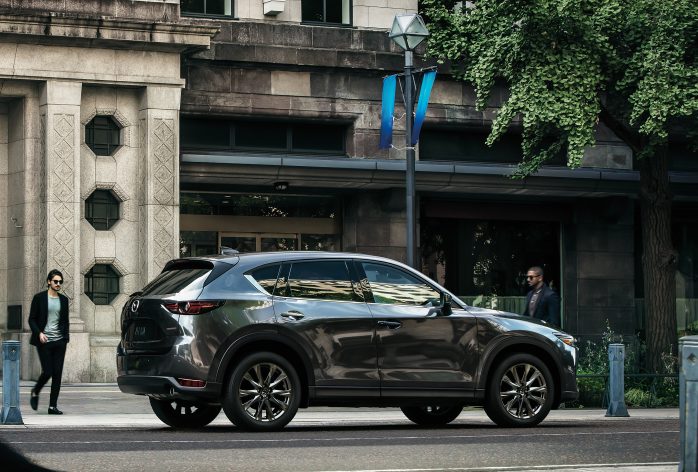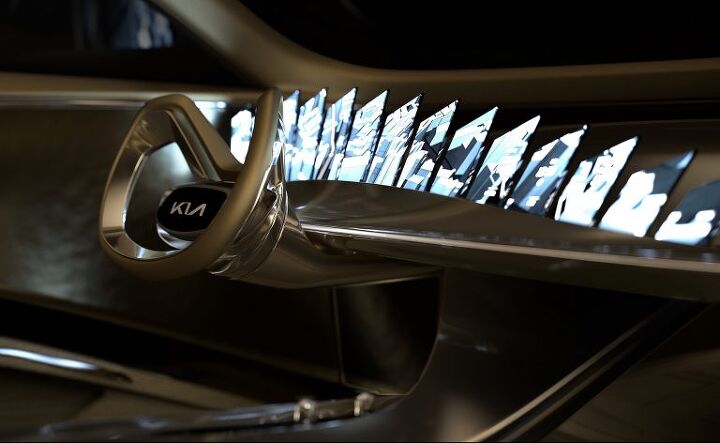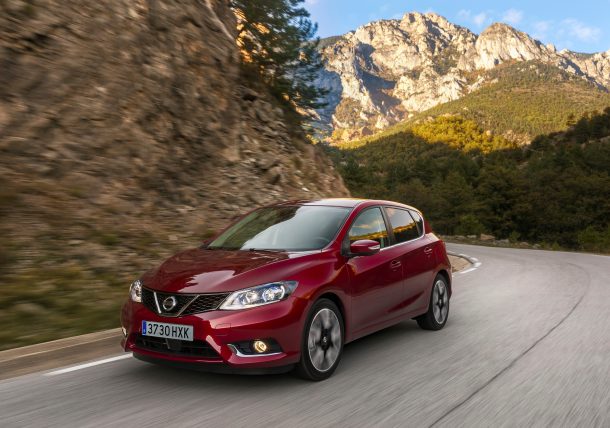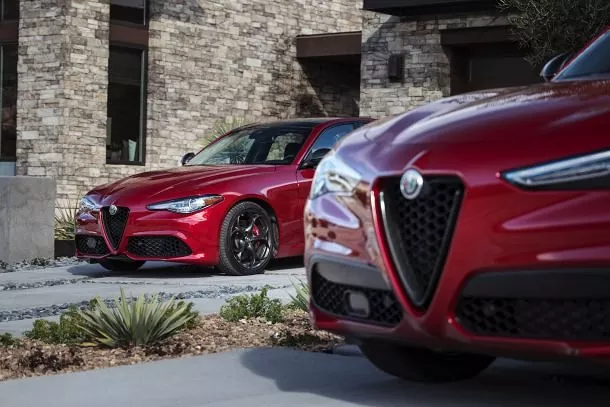#AutomotiveTrends
Report: Abandoning Small Car Segment Could Be a Big Mistake
A new report from Edmunds tries to make a case against Ford and General Motors placing their small- and medium-sized cars on an iceberg and setting it adrift. We don’t even need to see the metrics to agree. Ditching cars for higher-margin crossovers and SUVs always seemed a little short-sighted. Without entry-level models, you’re likely to get fewer entry-level (i.e. new) customers, and several of the models axed from North American lineups happened to be the most enjoyable to drive.
Selfishly, we like to see plenty of variety among mainstream brands.
Edmunds’ concern isn’t so much about Ford and GM losing money; rather, it’s more about the automakers setting themselves up for failure further down the line. The analysis revealed that 42 percent of Cruze and Focus owners are choosing to stay in the passenger car segment, rather than spending a little (or lot) more to purchase crossovers and SUVs. Meanwhile, 23 percent of Cruze owners and 31 percent of Focus owners who traded in their car in 2019 ended up buying something similar from a competing automaker.
Glowing Grilles Are Coming Back?
With Mercedes-Benz already offering illuminated badges as a factory option, we knew it was only a matter of time before BMW responded. According to Bimmerpost, dealerships will soon offer “Chrome Iconic Glow Kidney Grilles” as an option.
The accessory is exactly what it sounds like. BMW either looks to be trying to steal a bit of Mercedes’ thunder or this is a touching tribute to Mercury vehicles from the early 1990s. Obviously, we’re hoping it’s the latter scenario.
Is Mazda's Premium Push Prudent?
While Mazda’s vehicles are often praised for being handsome and playing host to desirable driving dynamics, the latter half of that arrangement has become less important in recent years. Remember the last time you saw a Zoom-Zoom ad? Neither do we.
That’s because Mazda isn’t the same brand anymore. While some of its budget-minded performance chops remain intact (MX-5), the prevailing shift has been toward luxury — which is kind of a nebulous concept these days. In the most general sense, it means Mazda is pushing for higher-margin vehicles and fancier showrooms. But it’s not a guaranteed strategy for winning… or losing, for that matter.
Point Taken: Kia Mystery Concept Pokes Fun at Ridiculous Design Trend
Last week, Kia teased a mystery concept bound for a Geneva Motor Show unveiling as a way to show off its consistently improving skills in automotive design. With a second batch of teaser photos cropping up on Thursday, it’s now abundantly clear the brand made no small effort to create a shining beacon of vehicular style. But it also happens to have more screens than the TSA, indicating that Kia willingly engaged in one of this year’s biggest concept car styling trends.
Truthfully, the display bandwagon probably left town in 2018 — about the time when Byton revealed a crossover at CES with a screen that literally replaced the entire dashboard, plus one mounted on the steering wheel for good measure. The company could be seen disappearing beyond the horizon, whipping its horses while other manufacturers attempted to catch up and climb aboard.
Now, Kia is holding the reins. And it’s laughing maniacally.
Could Norway's EV Adoption Signal Our Own Electric Future?
Perhaps — but Norway treats EV owners like royalty.
Battery electric vehicles are not subject to most of that country’s automotive taxes, are subsidized via credits, and are frequently offered free parking and charging points as a way to further encourage drivers to get away from gasoline and diesel. Norway is also working aggressively toward banning all gas-powered vehicles by 2025.
According to Reuters, the strategy is working. The independent Norwegian Road Federation (NRF) said Wednesday that electric cars rose to 31.2 percent of all sales last year. EVs represented 20.8 percent of the country’s overall sales in 2017 and just 5.5 percent in 2013.
QOTD: Which Trend Do You Want to Wish Away?
Like 26-year-olds playing oddly mature high schoolers in films and on TV, some trends evolve into industry standards — the go-to blueprint for success. If the big guys are doing it, then by God, the creators say, so will we. This is the way to go.
The auto industry functions much like Hollywood in this regard, though the major players would insist that careful and predictive analysis of consumer buying behavior are behind their pursuit of the Next. Big. Thing. In crafting the vehicular landscape OEMs are convinced will make you hot, trends materialize. Rivals swerve into the same lane, desperate not to be left behind. Suddenly, once-unique attributes become ubiquitous. Departures become the norm. Think tailfins in the late 1950s, landau roofs in the late ’60s to early ’80s, plastic cladding in the late ’90s/early ’00s, and ginormous, child-swallowing grilles in the 2010s.
As there’s too many trends to mention, why don’t you list some you’d like to see hurled into the sun in the New Year?
Like Manual Transmissions, Handbrakes Are Also Hurtling Towards Extinction
We’ve long bemoaned the death of the manual transmission. But with few practical advantages other than being more enjoyable to a limited subset of the population, it’s quickly (and understandably) slipping into obscurity. It’s not alone. Based on research conducted by online automotive marketplace CarGurus, the good ol’ handbrake is also rapidly losing relevance as automakers shift their focus to electronic parking brakes.
Isolating its research to the United Kingdom, CarGurus claims just 37 percent of new cars leave the factory with a traditional, mechanical brake lever. And those that still have them are typically bargain-focused nameplates like Suzuki and Dacia. Considering neither of those brands sell any models here, the number is likely even lower in the United States.
Crossover Takeover: Nissan's Compact Cars Leave Europe Indefinitely
Nissan is ending sales of its last two compact cars in Europe and Russia, citing a the growing demand for crossover vehicles as the reason. The automaker stopped producing the Pulsar hatchback for Europe in June and says it will end production of the Almera sedan in Russia later this year. Both models are the sister car to our own Nissan Sentra.
The Pulsar was launched in 2014 to give Nissan a fighter for the competitive compact-featherweight category and fill a gap left in the brand’s European range in the wake of the discontinued N16 Almera. Unfortunately, it hasn’t been the sales success Nissan hoped for. The Pulsar never quite managed to match the N16’s volume. Nissan’s decision to abandon it leaves the Leaf EV as the only non-utility compact sold by the manufacturer in the region.
Just How Bad Are Car Sales Going to Get?
As the industry stresses about the new vehicle market taking it easy for the foreseeable future, there’s one aspect of it that’s of particular concern: car sales. After dominating the field for so long, passenger car sales fell below half of the market just a few years ago. That gap continued to widen through 2018.
Automakers responded by shifting output towards utility vehicles and crossovers. Ford ultimately decided to abandon the majority of its passenger cars in the United States as other manufacturers scramble to adjust their lineup to account for consumer tastes. However, these changes are also helping to push shoppers further away from cars. Bank of America Merrill Lynch estimates that 71 percent of vehicle introductions for the 2019 through 2022 model years will be light trucks.
Some automakers still believe cars hold an importance that’s not to be ignored. True, some models still sell incredibly well. But the general assumption is that they’ll continue losing relevance in the coming years. It’s likely to take another energy crisis or major shift in consumer preference to turn back the tide of crossover vehicles.
Subaru Says Sedans Are Still Working, Doubles As Contingency Plan
Ford’s announcement that it will eventually eliminate every sedan from its domestic lineup has forced the automotive media to consider which automaker will be next to cart theirs off to the guillotine. Due to the growing popularity of crossovers and their inherent profitability, it’s probably just a matter of time until another manufacturer tosses all of its sedans in a burlap sack and drowns them in the proverbial river.
General Motors seems ready to abandon the Chevrolet Impala and Sonic, and Cadillac’s ATS, CTS, and XTS will soon be replaced by two unnamed sedans. Buick’s Lacrosse also looks to be a likely candidate for execution, and rumors exist that Caddy’s CT6 may also be destined for death. However, while rumors swell that American automakers are just years away from from killing the four-door car, Subaru says sedans remain totally relevant.
As a smaller but rapidly growing manufacturer (domestic sales have tripled since 2010), it’s dangerous for the brand to become too reliant on a single segment. If the market suddenly shifts, Subaru knows it’s better not to get caught with its pants down. In fact, it’s almost as if the company’s national manager of product communications, Dominick Infante, is counting on that.
Tesla and NTSB Squabble Over Crash; America Tries to Figure Out How to Market 'Mobility' Responsibly
The National Transportation Safety Board, which is currently investigating last month’s fatal crash involving Tesla’s Autopilot system, has removed the electric automaker from the case after it improperly disclosed details of the investigation.
Since nothing can ever be simple, Tesla Motors claims it left the investigation voluntarily. It also accused the NTSB of violating its own rules and placing an emphasis on getting headlines, rather than promoting safety and allowing the brand to provide information to the public. Tesla said it plans to make an official complaint to Congress on the matter.
The fallout came after the automaker disclosed what the NTSB considered to be investigative information before it was vetted and confirmed by the investigative team. On March 30th, Tesla issued a release stating the driver had received several visual and one audible hands-on warning before the accident. It also outlined items it believed attributed to the brutality of the crash and appeared to attribute blame to the vehicle’s operator. The NTSB claims any release of incomplete information runs the risk of promoting speculation and incorrect assumptions about the probable cause of a crash, doing a “disservice to the investigative process and the traveling public.”
Driving Aids Allow Motorists to Tune Out, NTSB Wants Automakers to Fix It
Driving aids are touted as next-level safety tech, but they’re also a bit of a double-edged sword. While accident avoidance technology can apply the brakes before you’ve even thought of it, mitigate your following distance, and keep your car in the appropriate lane, it also lulls you into a false sense of security.
Numerous members of the our staff have experienced this first hand, including yours truly. The incident usually plays out a few minutes after testing adaptive cruise control or lane assist. Things are progressing smoothly, then someone moves into your lane and the car goes into crisis mode — causing you to ruin your undergarments. You don’t even have to be caught off guard for it to be a jarring experience, and it’s not difficult to imagine an inexperienced, inattentive, or easily panicked driver making the situation much worse.
Lane keeping also has its foibles. Confusing road markings or snowy road conditions can really throw it for a loop. But the problem is its entire existence serves to allow motorists to take a more passive role while driving. So what happens when it fails to function properly? In ideal circumstances, you endure a moderate scare before taking more direct command of your vehicle. But, in a worst case scenario, you just went off road or collided with an object at highway speeds.
Fashion Crime? Alfa Romeo Introduces 'Nero Edizione' Giulia and Stelvio
We may be giving Europeans more credit for pioneering fashion than they deserve. Dress shoes without socks? The Italians started that heinous trend and it’s unforgivable. But Italy also gave us Alfa Romeo, a brand that persists solely because of the warm feeling it evokes in a specific subset of the motoring population. Someone who owns an Alfa probably cares about style and they’ll happily discuss the merits of being fashionable while wrapped in designer clothing.
That’s why we were surprised when the brand introduced black editions of the Giulia and Stelvio at the New York International Auto Show. Officially called “Nero Edizione,” the appearance package removes every square centimeter of shiny trim and replaces it with a flat black alternative. While the murdering out of cars feels distinctly American, it isn’t. The trend spilled over into nearly every automaker with a global footprint and is now appearing in showrooms worldwide.
Still, it feels more than a little odd for Alfa to chase the de-chromed trend this late in the game.
Auto Executives Secretly Believe Battery-electric Cars Aren't the Future
While fuel-cell technology is progressing in places like California and Japan, the rest of the world shrugged it off after the initial hype subsided. Since then, practically every automaker in existence has invested in battery technology and electrification. However, according to a recent survey, most auto executives secretly do not believe batteries will be the real breakthrough in electric mobility. Dealers feel the same way, but they’ve been less cagey on the matter.
Uh, what? Then why is everyone and their mother talking up plug-in cars and sweeping the fuel cell under the carpet?
Well, in addition to hydrogen having an abysmal fueling infrastructure almost everywhere, governments simply aren’t pushing it like battery power. Incentivizing plug-in cars has gone a long way to bolster the segment’s popularity and, with China mandating that a growing portion of all auto sales be battery-related, companies have to lean into what they already have. That said, many executives still seem to feel that hydrogen-powered cars have more to give the industry.
Let’s not get ahead of ourselves. Its time to talk about why auto dealers are so unhappy about the electric revolution.
Everyone Leases Electric Vehicles Because the Next Crop Will Always Be Better
The automotive industry frames electric vehicles as the future of motoring, but despite a large number of plug-in options already available, the entire idea of owning an electric car is still rather futuristic. Leasing one, however, is far more contemporary.
Growing in popularity, automotive leasing hit a record high in 2016, accounting for 31 percent of all new vehicle sales in the United States. But that’s nothing when you isolate the number of electric cars. U.S. drivers now lease nearly 80 percent of battery-electric vehicles and 55 percent of all plug-in hybrids. Accounting for this trend is a consumer perception that EVs will only get better over time — which isn’t all that different from saying the current fleet isn’t all that impressive.






























Recent Comments